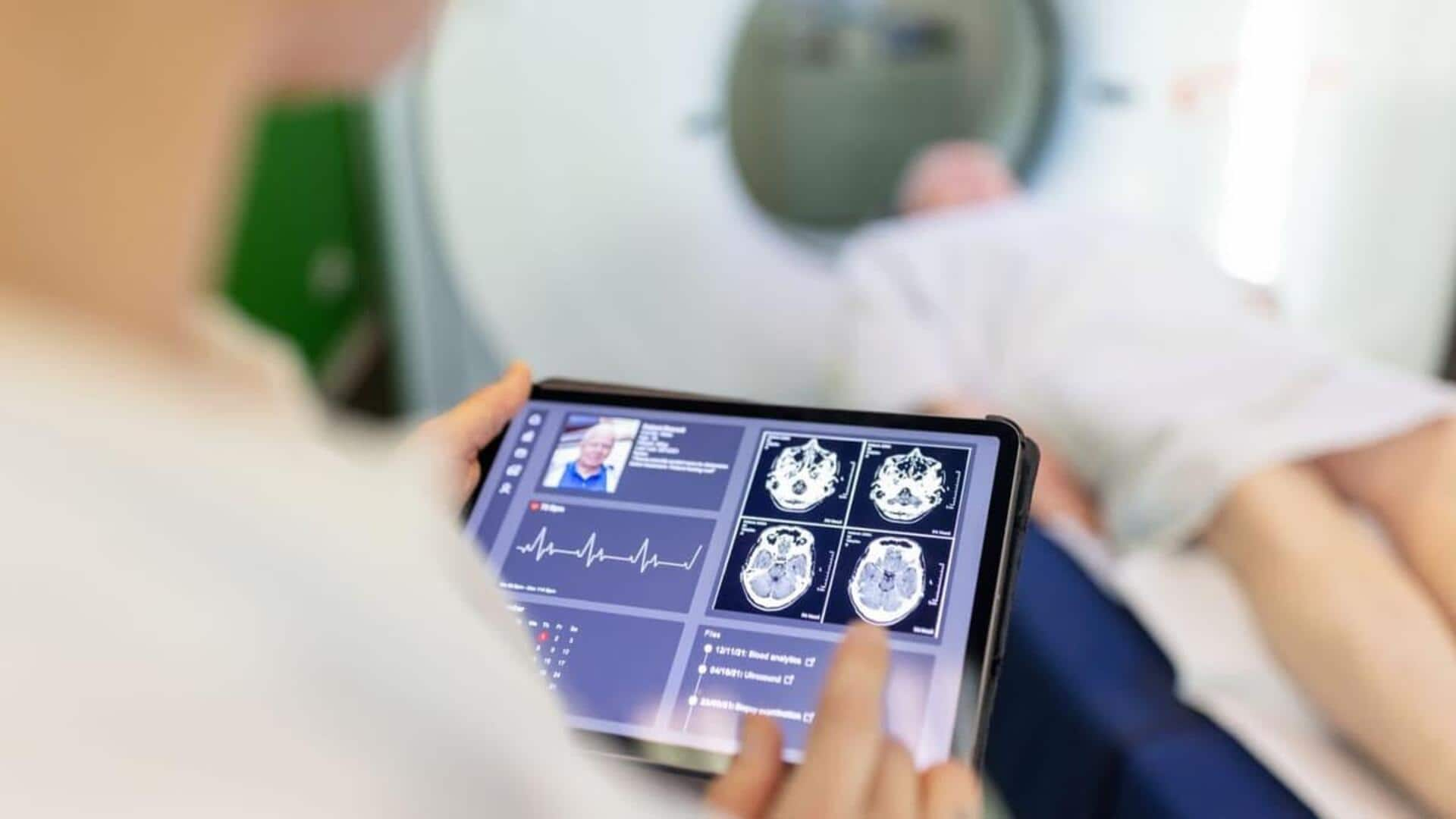
Scientists scan 100,000 people in world's largest imaging project
What's the story
In a groundbreaking effort, scientists have scanned 100,000 people from head to toe in the world's largest whole-body imaging project. The decade-long initiative has produced over one billion de-identified images of various organs such as hearts, brains, abdomens, blood vessels, bones, and joints. The data also includes medical histories and extensive information on genetic makeup, health, and lifestyle of volunteers.
Research impact
UK Biobank has already used subsets of these images
The UK Biobank, which monitors the health of half a million Britons, has already used subsets of these images to make significant discoveries. These include understanding how the heart affects psychiatric disorders and predicting future diseases from scans. The data also indicates that no amount of alcohol consumption is healthy for humans.
Research advancements
Project changes how diseases are detected and treated globally
Naomi Allen, chief scientist at UK Biobank, said this project gives researchers an "incredible window into the body." She added that for the first time, scientists can study aging and disease development in detail and at a massive scale. The ultimate goal is to change how diseases are detected and treated globally before people even fall sick.
Project details
Imaging project took 12,000 images from each volunteer
The imaging project took 12,000 images from each volunteer, showing the size, shape and structure of their brain, bones, heart and other organs. It also measured bone density and body fat. Ultrasound scans of neck arteries looked for blockages or narrowing that could increase stroke risk. Paul Matthews, chair of the UK Biobank imaging group at Imperial College London, said these scans were so detailed they could identify people at higher risk of dementia from previously invisible changes.
Health implications
Brain scans show link between alcohol consumption and dementia
The brain scans also showed that drinking even one to two units of alcohol a day was linked to changes in size and structure. This could lead to memory loss and dementia. Patricia Munroe, a professor at Queen Mary University of London, is using these new images to study the genetics of heart structure, function and disease. The scans capture cycles of heartbeats allowing her to identify genes that control its function as a pump as well as its structure.
Health disparities
UK Biobank is now re-scanning 60,000 volunteers
Abdominal scans have shown that people with the same BMI and waist measurement can have different fat distributions. This affects their risk of heart disease. UK Biobank is now re-scanning 60,000 volunteers to study how their brains, bodies and bones change over time. Louise Thomas from the University of Westminster found body scans taken two years apart showed an increase in visceral fat (bad fat) in the abdomen as well as muscle becoming more fatty with age.